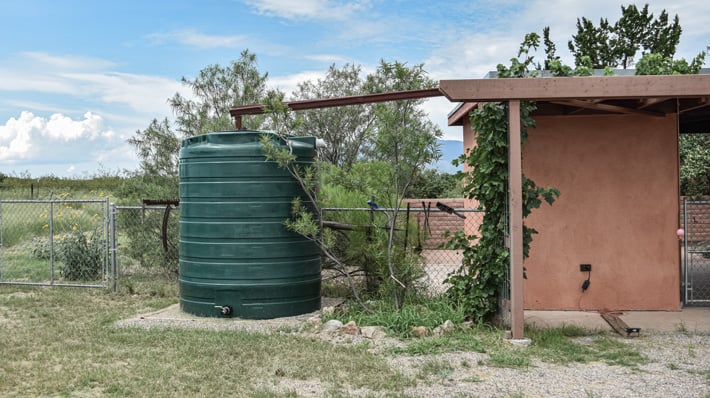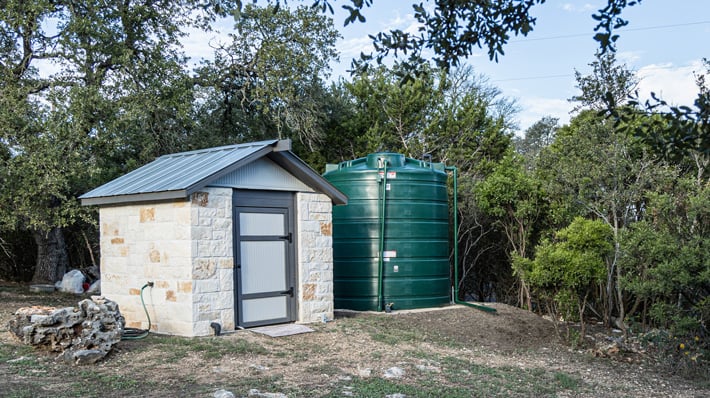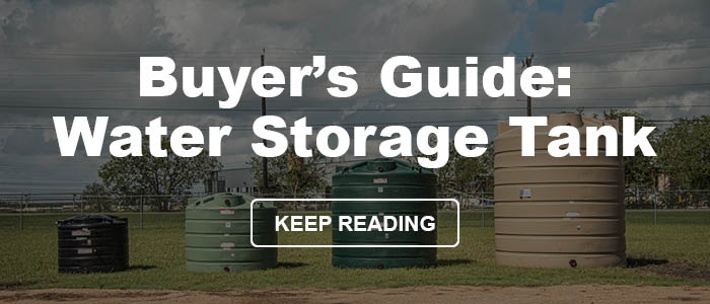
Whether you have acres of land or are nestled between houses in the suburbs, optimizing resource management is practical and essential. In fact, with unseasonably warm summers and unpredictable climate shifts, suburban homeowners are starting to approach rainwater harvesting and water storage for their property. If you’re a suburban homeowner, here are some things to consider before rainwater harvesting.
Questions To Ask Before Harvesting Rainwater

There are a few factors that homeowners, especially those in more urban or populated spaces, should consider before buying a water storage tank and starting their rainwater collection journey. Before you buy any rainwater collecting materials, ask yourself:
What Are You Going to Use The Water For?
This is the first and most important question before purchasing equipment. This will address what size water tank and all additional supplies, including pumps, pads, valves, and piping, you need to consider. There are an endless amount of ways to set up a rainwater harvesting system, so figuring out what you’ll use the water for is your top priority.
What Are Your HOA’s Rules On Water Tanks?
Make sure you know what your HOA’s rules are on water tanks. Some require you to keep your water tank height below a specific size. Others have regulations regarding where your tank can be located about the fence lines on your property.
Where Are You Going To Put The Water Tank?
Location will be a major deciding factor on what size tank to buy. For example, maybe you won’t be able to fit a 500-gallon water tank in your space, but two 250-gallon tanks could fit better.
Do You Have Gutters / A Catchment System?
Gutters are a must-have in order to collect rainwater. Without gutters, you can't catch the rain that falls on your roof. Your water tank should be positioned as close to the gutters as possible. to avoid excess piping from the roof to your tank.
Common Misconceptions of Rainwater Harvesting

Your reason for purchasing a water tank will vary depending on where you live, but regardless, there are a few common misconceptions that all water tank buyers should know.
Your Rainwater Tank Needs A Proper Base
A water tank filled to its capacity is extremely heavy. Regardless of where you put your tank, every location must have a level and stable ground that can support the weight of the water tank when it is full. There are a variety of different water tank bases that will work. However, it’s best to contact the dealer where you bought your tank from for professional help installing your water tank.
Rotating and Filtering Your Rainwater Collection
A common misconception that a lot of tank owners have is that motionless water in a water tank will stay pure and clean forever. Rainwater has debris such as twigs, leaves, sediment, as well as anything that is on your roof. Left motionless in the elements, the water could form germs and microorganisms, so at the end of the day, the importance of its filtration depends on what you’re going to use it for.
If you are using the water for gardening, then it won’t really matter. But if you are drinking the water/pumping it into your house, it’s best to keep this in mind: If you took a cup full of water, put a lid on it, and then set it out in your yard for three months, would you still want to use it?
That’s why you must filter your water if you are going to drink it or pump it into your house. Additionally, it’s recommended that you rotate your water whenever you can in order to keep it moving, as still water can form bacteria and microorganisms. You can rotate your water simply by using it often, or it will rotate naturally during a rainstorm.
Government Rebates On Your Rainwater Collection
In certain states across the country, rainwater collection material is tax-exempt. They may even give you a rebate, potentially giving hundreds to thousands of dollars per gallon on the size of the tank you buy. In that sense, you’re getting a discount on the price of your rainwater tank once you get that rebate. These rebates exist to help reduce the strain on certain cities’ water supply, especially those that utilize aquifers or have drought restrictions. In some cases, a local municipality fitting those requirements would rather pay you than add to the strain on water resources for the rest of the city.
Whether you’re gardening with it, drinking it, or just want to have it on hand, there are several ways you can use harvested rainwater. For more information on effectively utilizing your collected rainwater, visit our Water Storage & Rain Harvesting blog.

